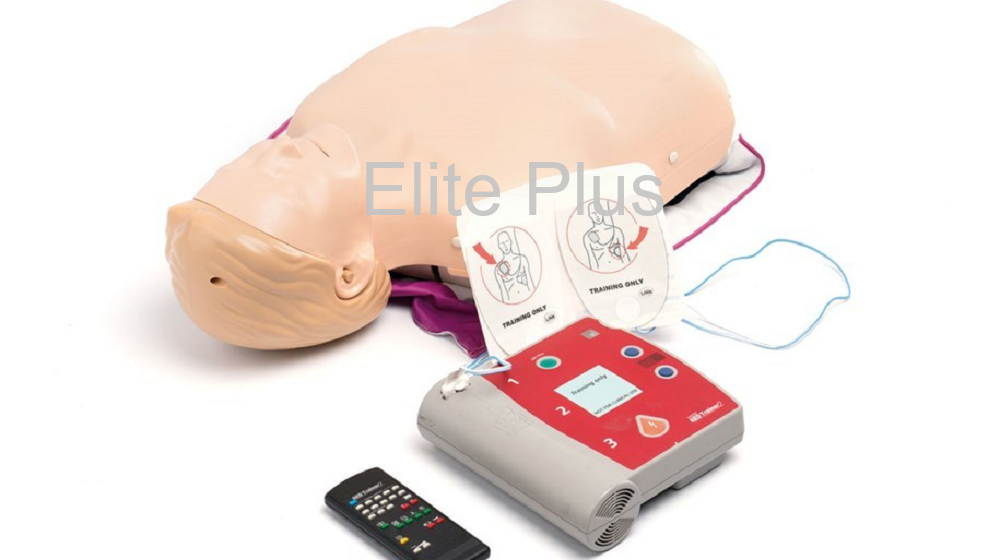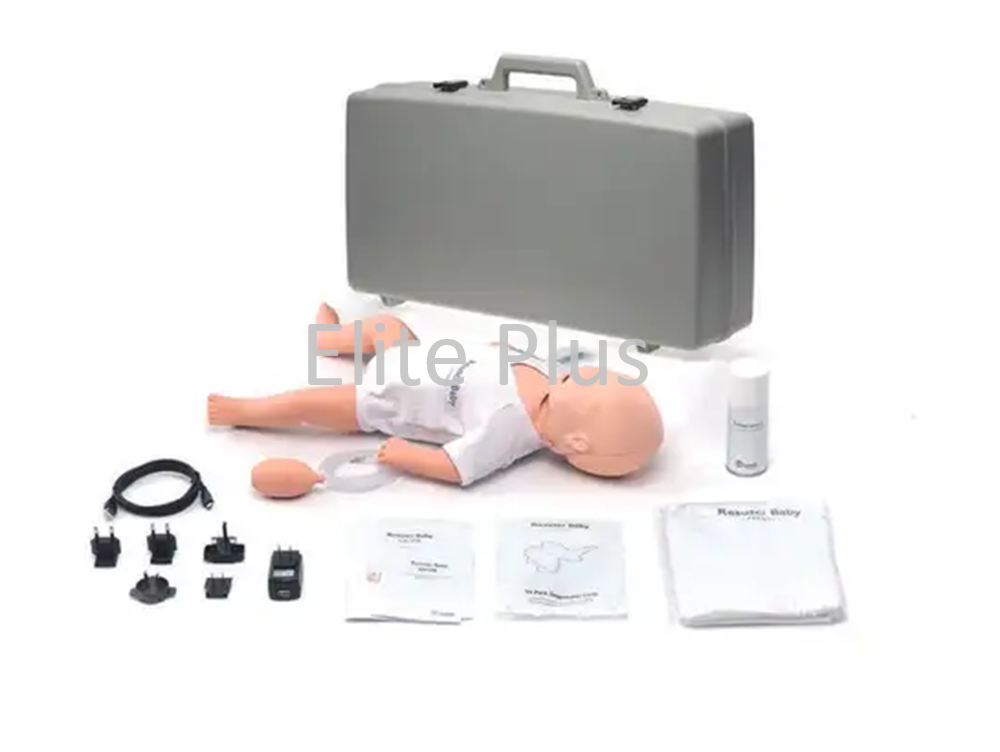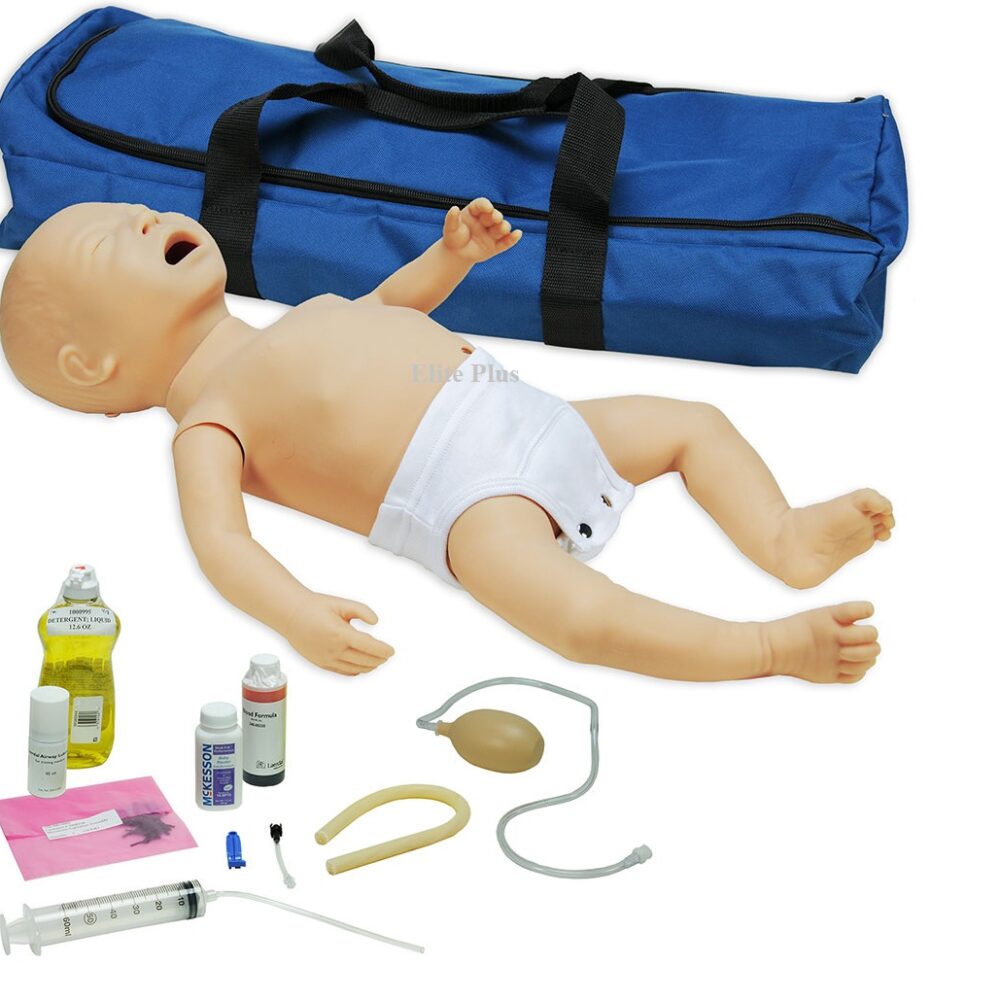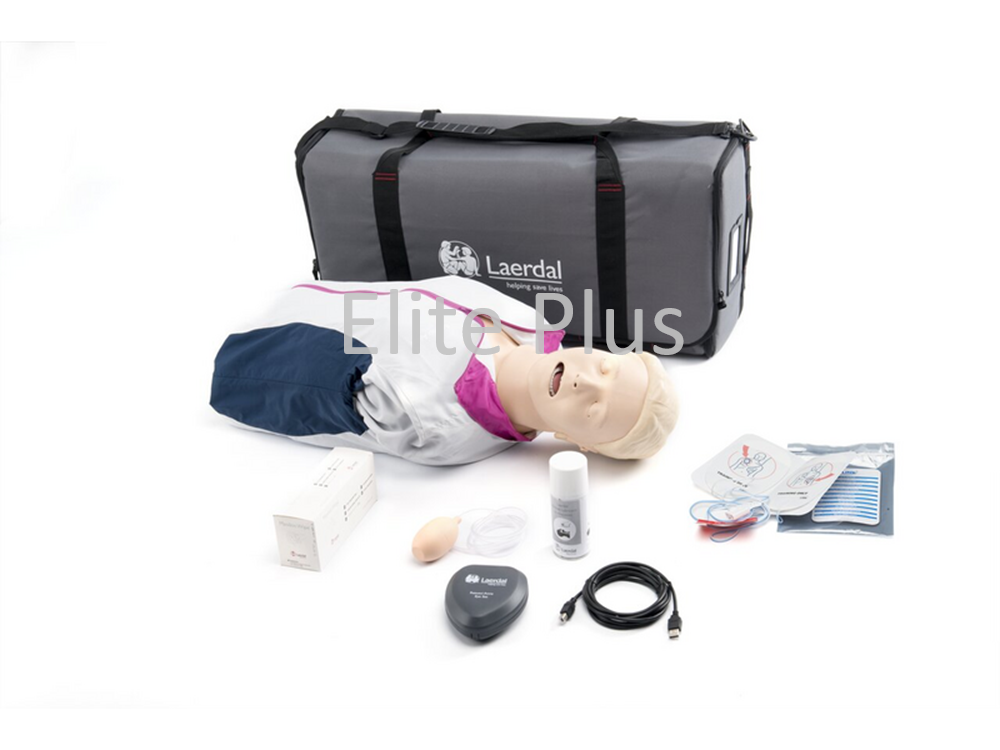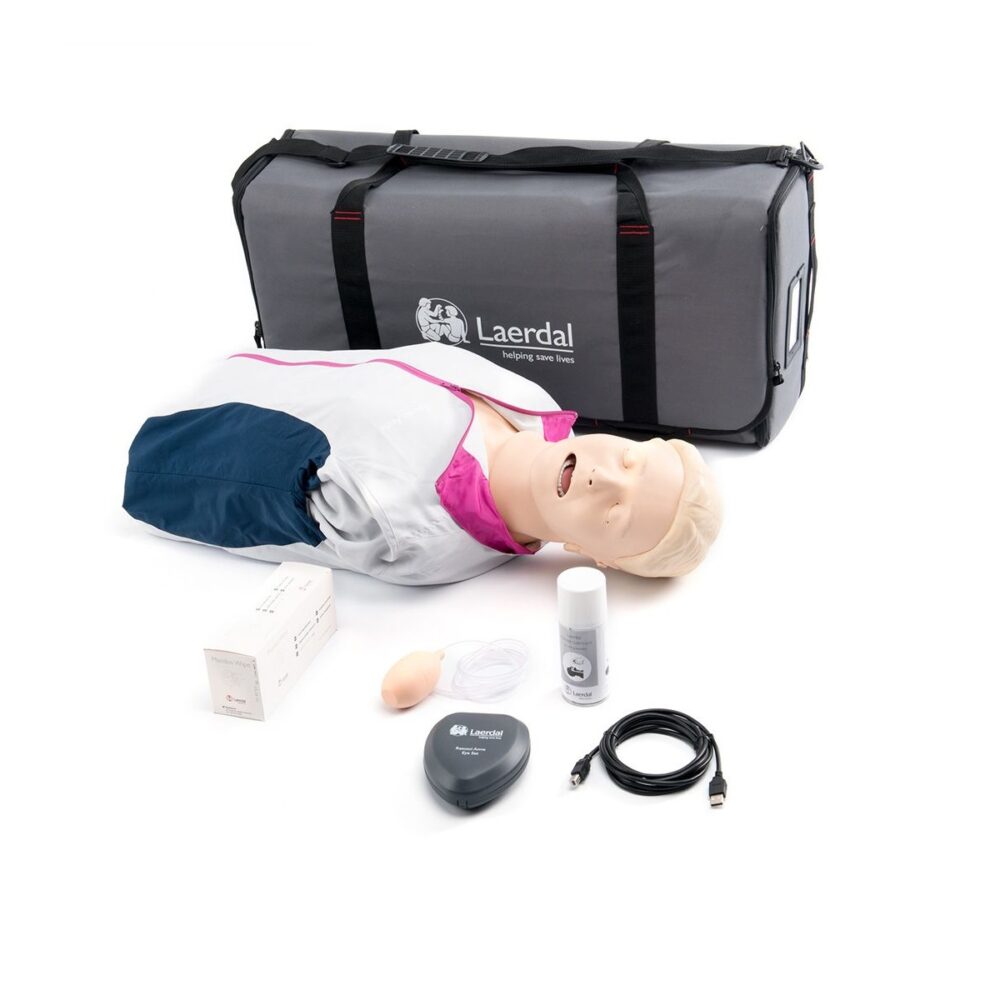Description
The Little Anne AED Training System is a complete product offering combining Little Anne AED manikin,
AED Trainer 2 and remote control into one affordable CPR-D training package. Little Anne AED is also
compatible with AED Trainer 3.
The unique design feature of the AED Trainers is that proper pad placement on the patient’s chest is
required in order to advance in the scenario, meaning students receive quality CPR-D training. The remote
control unit also gives the instructor unique control of the scenario.
Educationally effective training with realistic anatomical landmarks
The Little Anne AED Training System system offers all the essential features necessary for learning adult
CPR, defibrillation and defibrillator pad placement:
Anatomically correct landmarks and sternal notch allow the student to practice identification of all
anatomical landmarks relevant to adult CPR and defibrillation.
Natural obstruction of the airway allows students to learn the important technique of opening the airway
as in a real-life situation. This teaches how to effectively administer air to the patient. Abdominal thrusts
can also be practiced.
The realistic airway function means that the airway remains obstructed without proper head tilt/chin lift
or jaw thrust manoeuvres. Chest rise is seen with correct ventilations.
Oral and nasal passages allow realistic nose pinch required for mouth-to-mouth ventilation.
Quality performance feedback to ensure effective learning
Voice prompts match the live FR2 and FR3 AED defibrillator provided on the AED Trainer 2 and AED Trainer
3.
LEDs illuminate on the manikin to allow comparison of ideal pad placement and accuracy.
Audible feedback reinforces correct compression depth. An optional “clicker” feature signals correct
compression depth.
Realistic resistance for chest compression allows the students to experience the amount of pressure
needed to perform proper chest compressions in a real-life situation


